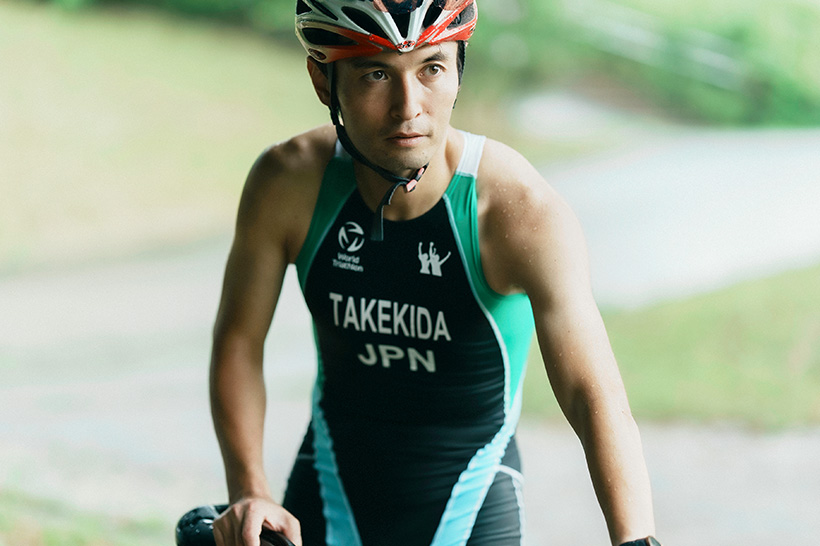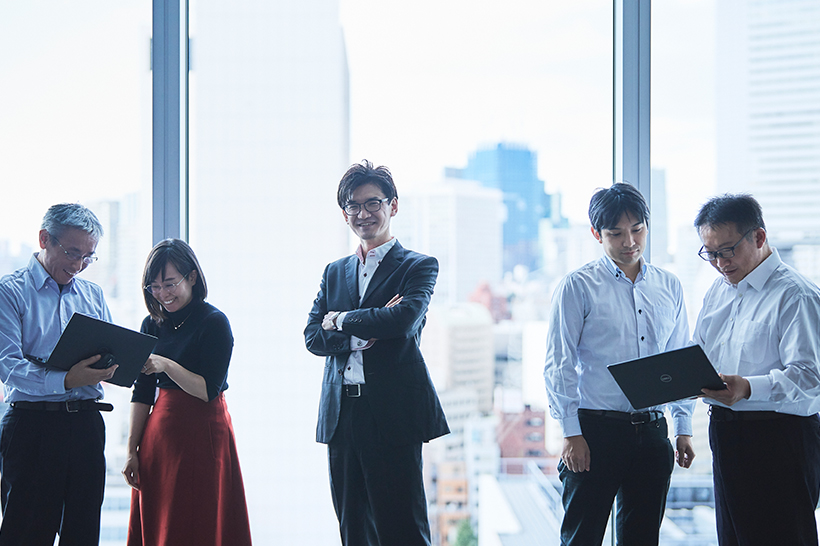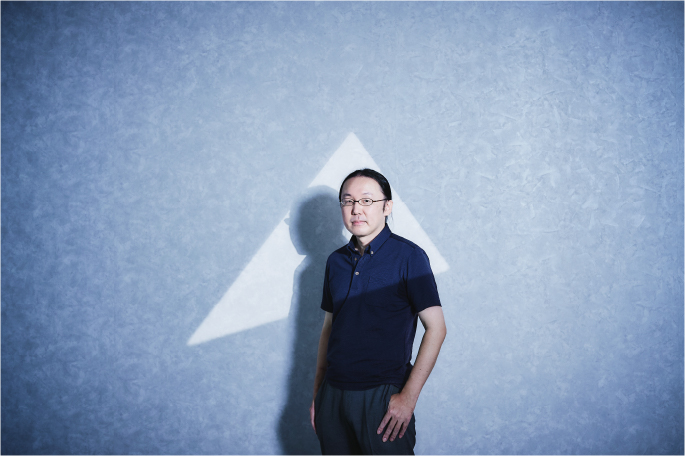
10.01.2019
How Will Kioxia,
the World’s Number Two Flash Memory company,
Change the Future?
Global campaign launch
#FutureMemories
Toshiba Memory, which boasts the world’s second-largest share in the flash memory market, will change its name to KIOXIA as of October 1, 2019. After that, it will surrender the formidable brand power of global company Toshiba, and both in name and in reality, begin its existence as a new company. How does KIOXIA view its current position, and what is its vision for the future of semiconductors? Prior to its new beginning, we spoke with Executive Vice President and Executive Officer Nobuo Hayasaka (interviewer: Keiko Hamada, Chief Editor, Business Insider Japan).
The Meaning Behind the New Company Name, KIOXIA, Created by Young Engineer

Hamada: On October 1st, 2019, your company’s name will change from Toshiba Memory to KIOXIA. First, could you share with us the meaning behind the new name, KIOXIA?
Hayasaka: “KIO” comes from the Japanese “kioku,” or memory. “XIA” is derived from “axia,” the Greek word for value. As we become independent of Toshiba, we must change our mindset, and have established the mission of Uplifting the world with “memory.” Our employees will also make a fresh start and move forward confidently to make our presence known around the world.
Hamada: Toshiba is a brand recognized around the world, so given the name Toshiba Memory, the business description should be easy to change. As a global company, I’m sure there was much discussion surrounding the selection of a new company name that included the Japanese word, kioku.
Hayasaka: Yes, you’re right about that. As you say, there were those who felt that KIOXIA would not readily be accepted as the name of a global company. In the society of the future, however, where value is provided using massive volumes of data, flash memory, which is our core business, will serve an extremely important role. All executive members of Toshiba Memory were unified in thinking that KIOXIA was a good name for us to appeal to the world our presence as a company that pursued the value of “memory” created by people and society. Originally, we solicited name suggestions from employees, and from the 1,200 or so proposals received, KIOXIA was selected after lengthy discussion. It was proposed by a young male engineer.
Hamada: It’s symbolic that a young employee came up with the name that will launch your company into a new era. Semiconductors generally have the image of being inorganic, but when we think of the word kioku, we get the impression of the revival of people’s memories.
Employees Encouraged to Keep Their Heads Up

Hamada: With regard to changing your mindset in line with the new company name, you certainly are looking to continue to appeal the technological power accumulated during your time with Toshiba and Toshiba Memory. Your high-quality, large-capacity NAND flash memory in particular has received praise from around the world.
Hayasaka: That has been the foundation of our business to this point, so we need to carry it forward and evolve it even further. NAND flash memory was invented by one of our predecessors, and three-dimensional, or 3D NAND flash memory, was a world’s first. Each of our employees takes great pride in this.
Hamada: In 2015, all eyes were on Toshiba when it was discovered that fraudulent accounting practices had taken place there. Even during that time, didn’t the pride and confidence in the technological might of your semiconductor business waver somewhat? How did you, as someone from an engineering background, feel about all of that?
Hayasaka: Well, not only was our confidence in our technological power not shaken, I told our employees to keep their heads up. While the circumstances were definitely challenging, we had achieved some impressive inventions, so from a business perspective we were actually in pretty good shape. Seeing our employees hanging their heads would have been the most difficult thing to accept. I told them that we needed to maintain our confidence.
Hamada: There was conflict between Western Digital, with whom you had been involved in a tieup, and Toshiba over the sale of the flash memory business. Today, however, you have overcome that and are working cooperatively. What is the source of the synergy between the companies?
Hayasaka: A tremendous investment and technological resources are needed to develop and produce semiconductors. The advantage of scale realized by the two companies sharing the investment burden was significant. Moreover, we have various strengths beyond the technology to create flash memory. Western Digital is proficient in design technologies. That’s where the synergy lies.
Earning the Trust of the World Through Unbelievable Dedication

Hamada: Global competitors include Samsung of South Korea. So among this competitive atmosphere, how do you become the company of choice?
Hayasaka: KIOXIA is indisputably one of the world’s top flash memory manufacturers. Our efforts are geared toward becoming number one.
To have our business partners choose our products, high technological capability is of course crucial. But we must also remain competitive in terms of cost and services. And we must remain honest and deal with our business partners sincerely. We are a very diligent company, and in the event an emergency arises we will deal with it honestly. This comprehensive evaluation is connected to trust.
We are almost diligent to a fault, so it could be said that we are a bit too circumspect.
Hamada: On the semiconductor market, the speed of development and market fluctuations is rapid. Does that mean that until now you have been too solid? Are there aspects of your corporate culture you will be looking to change?
Hayasaka: Well, while we were part of Toshiba, the R&D center developed new technologies, and we commercialized the ones that were deemed worthy of taking to market. Going forward, we will have to have our own R&D division. That’s why we established the Institute of Memory Technology Research & Development. We are building a structure to conduct basic research into completely new memory and systems while looking 20 to 50 years into the future.
Hamada: Not just Toshiba, but all Japanese manufacturers look at commercialization after technological development. In the case of manufacturers overseas, it’s done in the opposite order. They think about what they want to achieve, what the world will become, and develop based on that, launching one product after another into the world. That is the difference in corporate culture between Japanese companies and those overseas, and an area where I feel Japanese manufacturers are struggling. I think that the perspective of developing based on what we want and what we want to deliver to the world is also important.
Hayasaka: You’re absolutely right. We have undertaken development based on what the market told us. It has not been sufficient, however, and I feel that we have to change the way we do things.
Confidence in Products and Technologies Essential to Society That Support Employees in Time of Adversity

Hamada: This #FutureMemories campaign is interesting. From the perspective of general consumers, a semiconductor is like a black box, but with a campaign like this people will certainly become aware of how important semiconductor memory is in everyday life.
Hayasaka: To provide new value, I think the campaign will be helpful in attracting the attention of consumers.
The scale of the semiconductor market overall is about 50 trillion yen, of which about one third is accounted for by memory. Even if we’re not aware of it on a daily basis, memory is used just about everywhere. And our employees are proud of just how useful our technologies have been to people.
There was a period during which new graduates tended to go into software given the attention drawn by the Internet industry, while those interested in joining a hardware company like ours waned somewhat. To overcome this, the management team went to various universities to carefully explain that semiconductors are in smartphones and just about every other device, and that they’re extremely important. Now we have lots of students joining us. Our products and technologies are essential in building a better society. This has led to the confidence that we feel.
Hamada: Japanese companies—particularly technological firms—believe that if they create quality products they can sell them, but we are not very adept at appealing this to people.
Hayasaka: That used to be true of us as well. But that has gradually changed. Today, in addition to creating flash memory, we are trying to propose the broadening of applications to business partners, and participate. While talking with universities and business partners in an attempt to understand how the world will change and the characteristics that will be required of memory, we undertake R&D.
Hamada: In collaboration with universities and other entities, you are also undertaking open innovation.
Hayasaka: We had already been collaborating with universities. But once we become independent of Toshiba, we will look to further strengthen connections both domestically and abroad with universities and consortiums. Doing so will enable us to embrace new cultures, and to adopt global trends and new technologies we didn’t have before. What’s more, we’re recommending that engineers get out a bit more. Until now we have been relatively closed, so I’d like us to be actively involved in dialogue with external business partners and other engineers.
Technology Generates Needs Which in Turn Generate Technology

Hamada: What will become possible in the near future through KIOXIA’s technological capabilities?
Hayasaka: he volume of data being stored continues to swell each year, and has grown to a massive amount. Until now some data has simply been stored and then discarded. But now, we are looking at utilizing that data in various ways, and creating new value from it.
Looking first at larger-scale efforts, medical- and automotive-related data, as well as that stored at data centers, can generate new value when analyzed using AI. Memory will be an essential device in these efforts.
Using the medical field as an example, we are conducting research by collecting images of internal organs. I say images, but what I mean is that we’re not collecting an x-ray at a time—we’re accumulating tens of high-definition images such as CT images. The volume of data will be tremendous.
Even more memory capacity is necessary to manipulate those images on a computer and view them from various angles. We are also collaborating with research institutions abroad on the initiatives required for this kind of research. But we also cannot see the entire vision for the future. While talking with people outside the company such as customers and business partners, we hope to create new value and solutions. In this regard, our connections with external entities are extremely important.
We have always had relationships with many companies and research institutions overseas as well as in Japan, and that has been one of our strengths, but we hope to fortify that going forward.
Hamada: In the new era, looking at telemedicine, for example, it’s not just about image diagnosis—it may be about the commercialization of remote operations, where surgical instructions are given from a remote location. Needs are born from the development of various new technologies, which generates needs, which in turn leads to new technologies. Technological innovation of flash memory will continue, and demand will increase. I’m really looking forward to the rollout of this new memory campaign.
The content and profile are current as of the time of the interview (October 2019).



